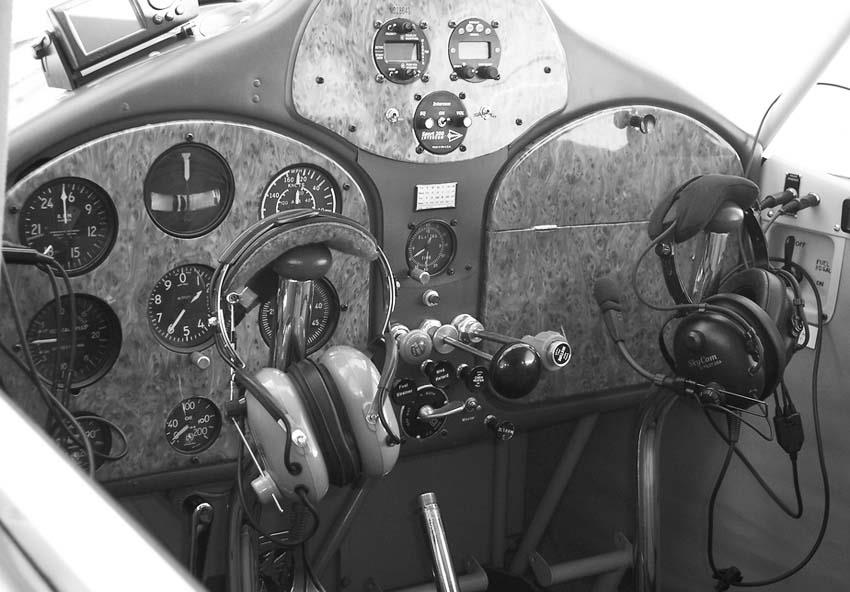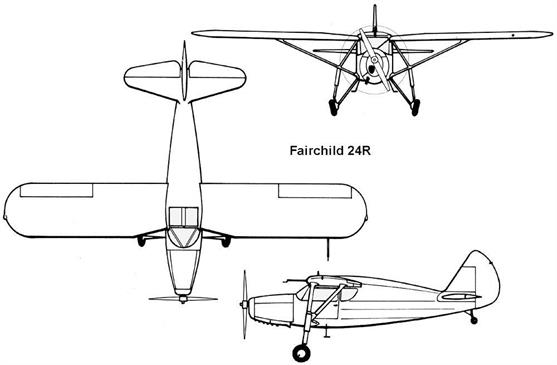| Type |
1 + 3 passenger aircraft |
| Engine |
1 Ranger L-440-5 |
| Dimensions |
Length 7,27 m , height 2,34 m , span 11,08 m , wing area 17,9 m2 , |
| Weights |
Empty 822 kg, loaded , max. take off weight 1307 kg |
| Performance |
Max.. speed 200 km/h , cruising speed , range 748 km, endurance , service ceiling 3900 m , climb |
| Type |
Werk.Nr |
Registration |
History |
|
|
|
|


Fairchild Aircraft was hit hard by the Great Depression in the early 1930s as airline purchases disappeared. Consequently, the company attention turned to developing a reliable and rugged small aircraft for personal and business use. The Fairchild 22 became somewhat of a hit and led directly to the new and much improved Model 24 which gained rapid popularity in the early 1930s, noted for its pleasant handling characteristics and roomy interior. Having adapted many components from the automotive industry (namely expansion-shoe brakes and roll-down cabin windows), the aircraft was also affordable and easy to maintain. In production continuously from 1932 to 1948, the aircraft remained essentially unchanged aerodynamically and internally, with the addition of extra passenger seating and optional equipment.
Designed by George Hardman's team, according to H.L. Puckett, "After the success of the F-22, the Hardman design team was directed to begin work on an enclosed airplane similar to the F-22. This design was to be known as the F-24 and was to be a side-by-side two place enclosed cabin airplane using as much design data and tooling from the F-22 as possible. The prototype F-24 was test flown at Hagerstown, Maryland late 1931.The original two seat F-24 gave way to a three place version and then to a four place model. Most of the F-24 airplanes produced were powered with the 145 h.p. Warner and later with the 165 h.p. Warner Super Scarab. The Model 24 was powered in 1935 with the Ranger 150 h.p. engine. In 1938, the F-24K and J models experienced the last major changes, one of these being the revised more graceful rudder and vertical tail later to be seen in the PT series and a 165 h.p. Ranger engine was fitted under the cowling of the K model. In 1939 the F-24 reached the peak of refinement with the addition of hydraulic brakes and a new tail assembly.
The Fairchild 24 built by Kreider-Reisner Aircraft, a division of Fairchild Aviation Corporation, remained in production from 1932 to 1948, essentially the same airframe but with various powerplant and configuration enhancements. In all, Fairchild constructed over 1,500 Model 24s, with an additional 280 being constructed by the Texas Engineering & Manufacturing Company (TEMCO) in Dallas when that company purchased the manufacturing rights after World War II.
